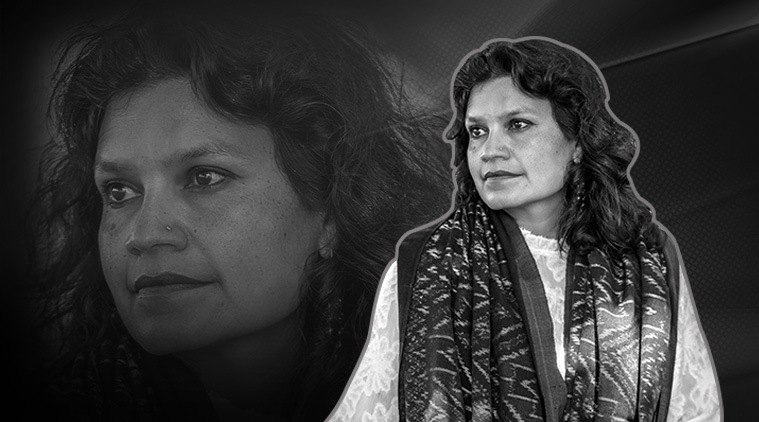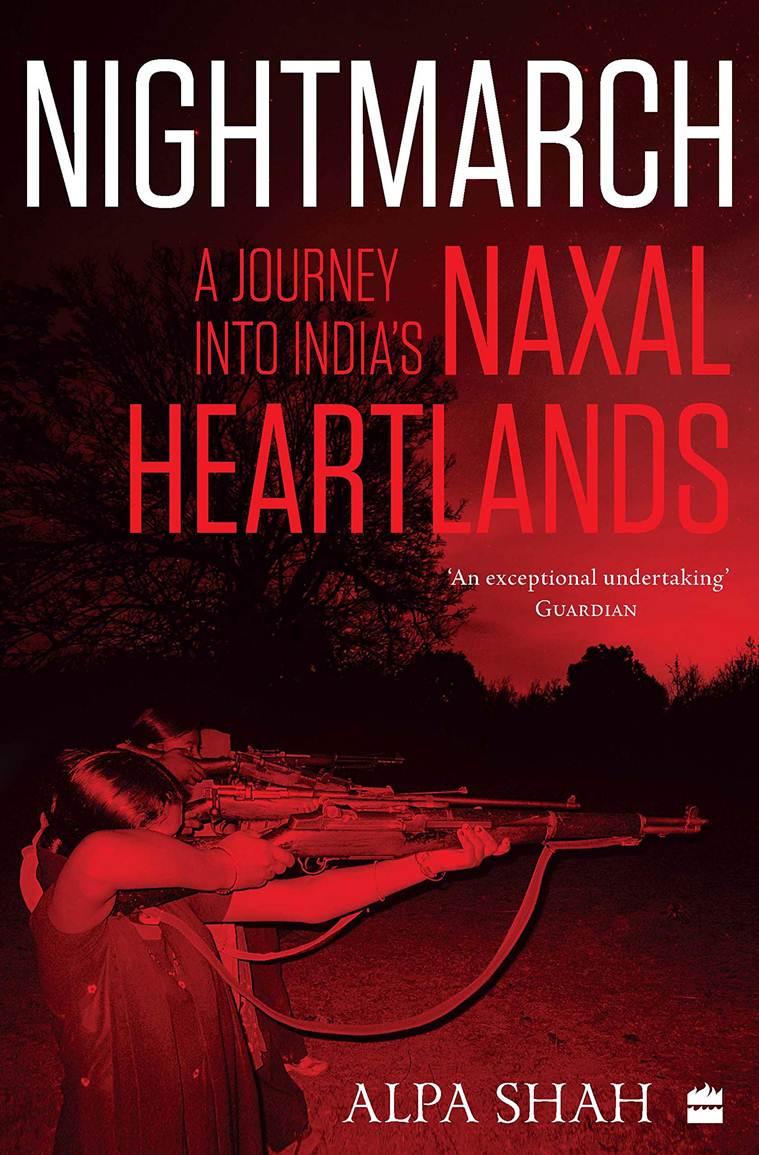
In February 2010, a few months into Operation Green Hunt, anthropologist Alpa Shah embarked on a seven-night walk across Maoist territories with a band of guerrillas, the only woman among them. Nightmarch: A Journey Into Naxal Heartlands (HarperCollins) is the story of that astonishing journey. A rare, granular portrait of how guerrillas came to find a home in the Adivasi heartland, it was shortlisted for the Orwell Prize — Britain’s most prestigious award for political writing— in May.
The book draws on Shah’s immersive research on the Adivasis, for which she lived among them for close to two years in Jharkhand. In an email interview, the scholar from London School of Economics talks about her book, why the Adivasis were drawn to the movement and the cost of violence.
Excerpts:
Initially, you thought of the Maoists as a version of the mafiosi. What made you see them differently later?
When I went to live among the Adivasi communities in their guerrilla strongholds and spent a lot of time with guerrillas at all levels, I found my initial understanding to be quite partial. I realised that the Maoists were driven by a desire to create a better world for all, to share wealth amongst the many and not just the few, and that this vision of an egalitarian future world guided their daily practice. Sadly, Nightmarch shows how this beautiful dream also fell apart.
From what you saw in Jharkhand, what was the Adivasis’ experience of the Indian state?
Historically, the Adivasis of the forests of eastern and central India have experienced the Indian state as quite oppressive. The state was the policemen and forest guards who beat you, who took away your land and forests, who called you jungli and treated you as wild, savage and barbaric. Over time, with reservations, some aspects of this have changed. Whereas before state officials were middle and upper castes from the plains, now you also find Adivasi forest guards, para teachers and health workers. But the state today is also the armies of Central Reserve Police Force (CRPF) and Border Security Force (BSF) who can raid your villages, beat you out of your houses, take away your land and forests, and incarcerate you for years on the charges that you are a Maoist without even bringing you to trial.
The Adivasi support for Maoists has been explained in various ways — as a result of exploitation by the Indian state, as a result of coercion by the Maoists. What did you find?
Over the years, it became hard to draw boundaries between the Adivasi and the guerrillas as every household had had someone or knew someone who was involved with their armies. The Maoists did initially win the sympathy of the forest dwellers by driving away forest guards, setting up health camps and promoting education, by raising the wages of kendu leaf collection and giving contractorship to local men. But it was the respect and dignity with which they treated those who were normally discarded as jungli, which enabled them to become part of the family and kinship networks in the forest villages.
In this effort, the ‘small things’ mattered the most — whether you took your shoes off before you entered a house or just barged in, whether you sat on the floor like everyone else or demanded a chair to be brought, whether you cleaned your plates and cups after you used them or just left them for someone else to wash. It included the tone of voice with which you spoke to others, how you addressed them, as well as your body language. You can preach as much as you want against exploitation, oppression and inequality but if you still behave as a person demanding privilege, one who maintains caste and tribe prejudice in verbal and bodily language, no matter what ‘development’ measures you bring, it will be hard for you to be accepted as one of the locals.

You write about young boys who join the Maoists because of a fight with parents, as a way of rebellion. What do these non-ideological motivations reveal about young Adivasis and their choices?
Kohli, a 16-year-old Adivasi youth, joined the guerrilla armies because of a fight with his father about a glass of spilt milk. His sister and another cousin later joined Kohli for reasons that seemed more personal rather than ideological. What these stories reveal is just how embedded the Maoists had become in the region as Adivasi youth often saw them as a second home. They also show how few options Adivasi youth had; the year before, Kohli had run away from home, but that time it was to migrate to some far away brick kiln where he worked for a few months of the year.
What role does violence play in the Maoists’ operations?
They argue that armed resistance is the only option left to fight against the enormity of the structural violence — the everyday institutional violence of poverty, inequality, social injustice and neglect — faced by oppressed people in India. But in the face of the military onslaught of the Indian state, the Maoists have become reduced to focusing only on their violence at the cost of the social and organisational work they seek to do for the poor. The danger in such circumstances is that you begin reproducing the violence of the oppressor, and that you become as terrifying as them, and, thereby, destroy yourself from within.
Could you tell us about your experience of gender equality in Adivasi communities? How did the Maoist leadership respond to it?
In the plains of Bihar, neighbouring the Adivasi forest villages of Jharkhand where I lived, most women veiled themselves in front of men, did not go out to work if they could afford to, did not have the freedom to move out of their domestic confines and had little financial autonomy as men controlled the purse. In comparison, in Adivasi villages patriarchy was more muted. Adivasi women worked alongside men, did not veil themselves, and even drunk home-made alcohol alongside men (something unheard of in other parts of India). Premarital and postmarital affairs for men and women were not reprimanded in the way they were in other parts of Indian society, and, if a woman was unhappy in marriage, she could leave a husband without being ostracised.
But the Maoists assumed that Adivasi women faced the same inequalities and failed to recognise and work with the progressive gender values that already existed within Adivasi communities and also contributed to their destruction.
How successful has the Indian state been in the years since you left Jharkhand in shrinking the physical base of the Maoists?
The Indian state’s military domination has reduced the territory that the Maoists can live in to very small pockets. In the guerrilla strongholds where I once lived, whereas previously the security forces would only enter once every three weeks or so, now children go to school against the high fences of a permanent barracks. The prisons of central and eastern India are overfull with people incarcerated as alleged Maoists. State approach to the Maoists has been repressive and this hasn’t transformed much with the change in government. At a military level, as far as I can analyse, what is happening now is a continuation of what the UPA 2 government set in place, perhaps, with greater stealth and silence. When I conducted field research, the areas where the Maoists were based did not have the presence of the Sangh Parivar’s Vanvasi Kalyan Ashram. Perhaps, this will change over time.
How do you see the creation of the category ‘urban Naxal’?
It is quite ironic that the term ‘urban Naxal’ has gained prominence in state and media rhetoric at a time when the Maoists have been critiquing themselves for having very little reach among urban populations. It is being used as a means to discredit and silence the lawyers, activists and intellectuals who have done the difficult work of protecting and fighting for the rights of India’s minorities and poor.
If the Indian state continues to push back against Maoists, will that leave Adivasis in a more precarious state?
Most certainly. But, sadly, enormous damage has already been done. We need the state to arrest not only its current security measures in Adivasi areas but also to have a dramatically different approach to its Adivasi communities — one that protects their land, forests, livelihoods and lifestyles.